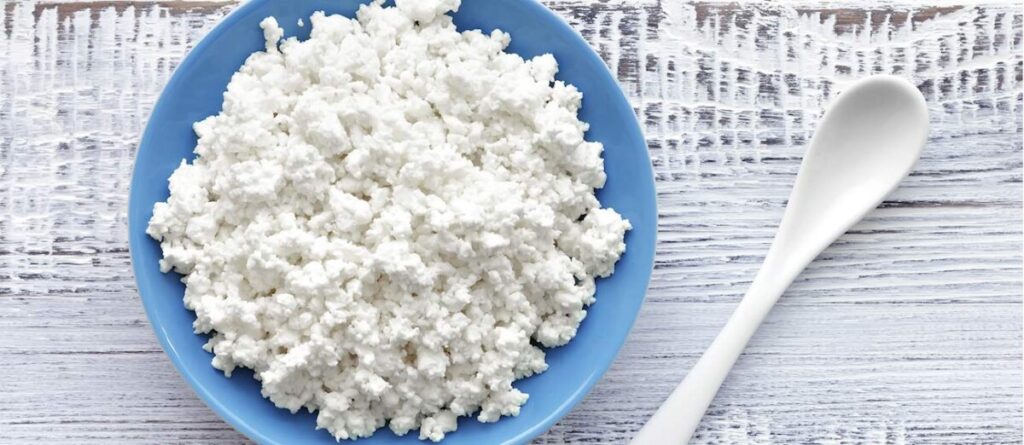In the esteemed "10 Best Rated Goat Cheeses in the World" list, the top 50 entries showcased exceptional goat cheese offerings from around the globe. France proudly dominated the rankings with an impressive presence of 19 delectable goat cheeses, solidifying its reputation as a gastronomic powerhouse.
Not to be outdone, Greece also shone brightly on the list, contributing a remarkable selection of 16 goat cheeses that captivated the TasteAtlas audience with their distinct flavours and textures.

Including these exquisite cheeses from France and Greece further cements their status as culinary destinations known for their exceptional goat cheese varieties. The TasteAtlas audience's discerning palates have spoken, celebrating the rich traditions and craftsmanship behind these top-rated goat cheeses from these two gastronomic havens.
The Top 10 Greek Goats Cheeses
1. Kefalotyri is a traditional Greek Cypriot cheese made from goat’s or sheep’s milk. It has a firm and flaky texture with irregular eyes and a strong, rich aroma, while the flavours can best be described as salty, strong, tangy, sharp, and spicy.
It is believed that kefalotyri is the predecessor of most hard Greek cheeses since it dates back to the Byzantine era. There are two main varieties – young kefalotyri, aged for a minimum of 2-3 months, and aged kefalotyri, which is aged for at least one year and has a much stronger flavour.
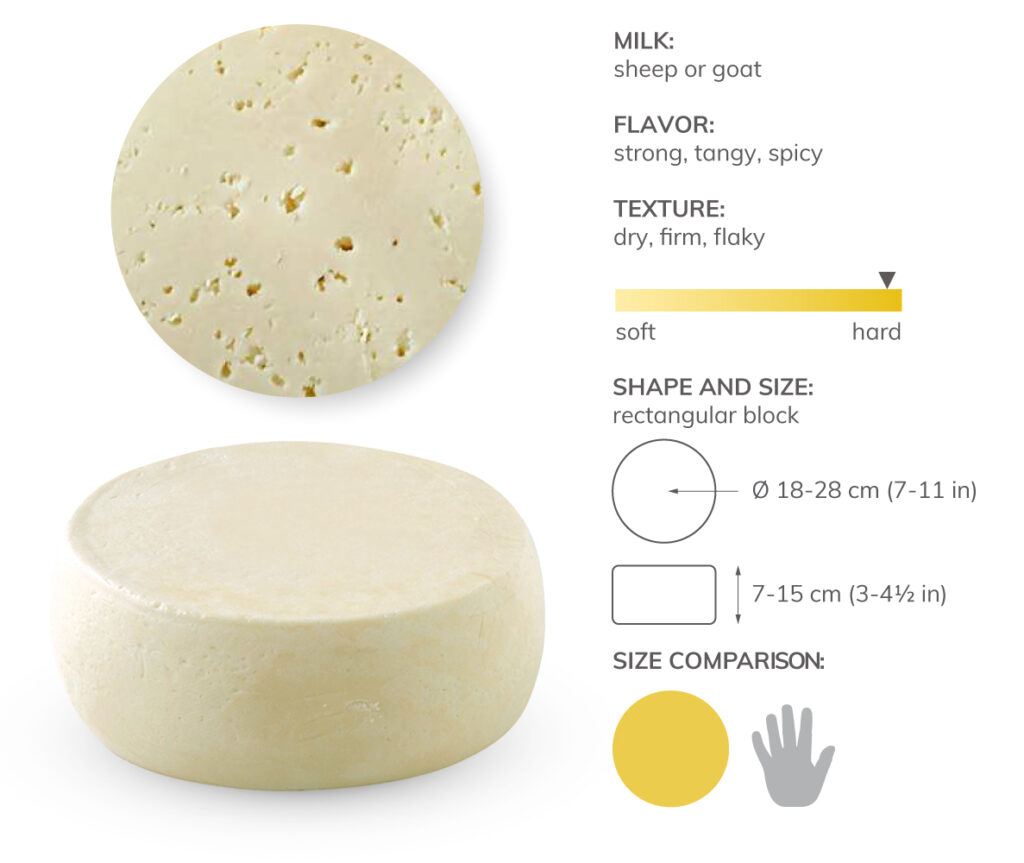
2. Mastelo refers to trademarked Greek cheeses produced exclusively in Chios. There are two types of Mastelo – one is made from Chian cow's milk, and the other one from goat's milk. The cow's milk version is white in colour, with a milky aroma and a smooth texture.
The flavours are slightly salty and milky. It has a high melting point, making it great for grilling. It's also especially suitable for saganaki fried cheese meze. The goat's milk variety is also white in colour, with a soft and elastic texture and a salty flavour.
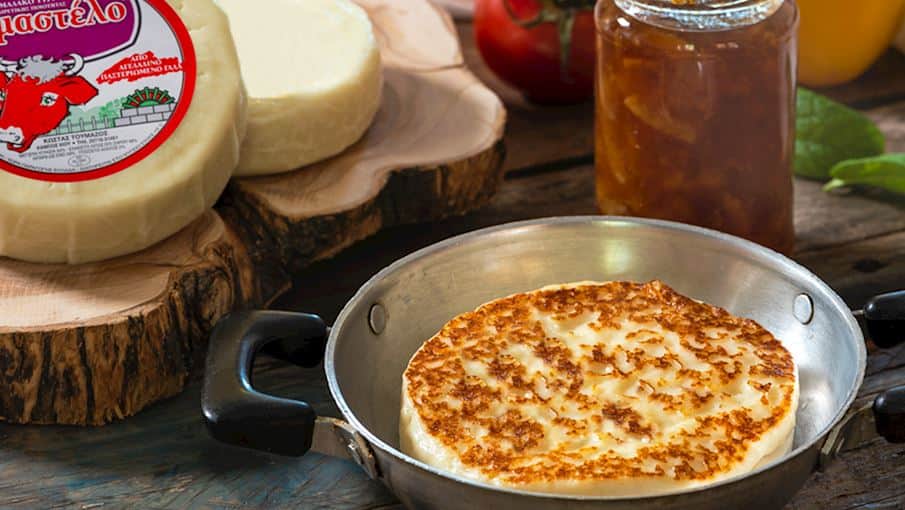
3. Myzithra is a traditional Greek cheese made from the whey of goat’s or sheep’s milk cheeses. It comes in three main varieties: fresh, sour, and aged. The fresh one is soft in texture and unsalted, typically shaped into eggs or balls.
Its aroma is pungent, while the flavour is quite mild. Sour myzithra is prepared with sheep’s or goat’s milk, yeast, and salt, while the aged variety is hard in texture and very salty. The first two varieties are often used in baked pastries and desserts, while the aged variety is best when grated over pasta, soups, and casserole.
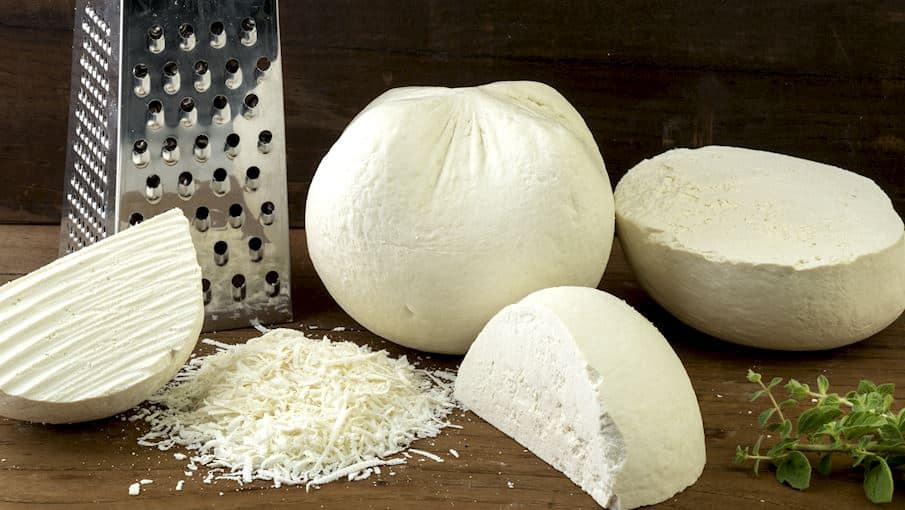
4. Krasotyri is a traditional Greek cheese originating from Kos. The cheese is made from sheep's or goat's milk (or a combination). The milk is warmed, pasteurized, placed into containers, then traditional elongated wicker moulds where it drains.
After it's out of the mould, the cheese is placed in brine, drained, then combined with wine sediment and left to age for up to 20 days. The result is a distinct flavour of the wine. The texture is delicate and soft, and the aromas are reminiscent of wine.
Serving Krasotyri with homemade bread and vegetables drizzled with olive oil is recommended.
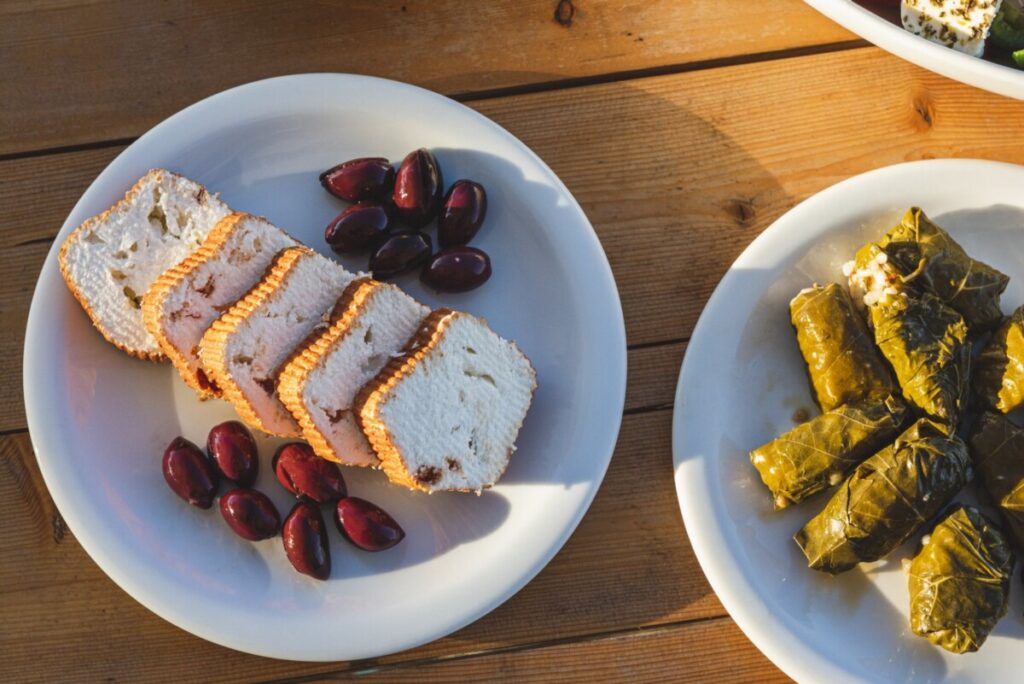
5. Manouri is a silky smooth, fresh whey cheese made exclusively in the areas of Central and Western Macedonia and in Thessalia. It is a particular type of unsalted myzithra cheese known from the Byzantine period. Manouri, produced in the province of Mplatsi in Macedonia, is considered to be one of the best, and it is made by adding milk and cream to the whey of sheep's or goat's milk or a mixture of both derived from hard cheese production, usually from making feta cheese.
Although it is quite soft, it is firm enough to be sliced. Its flavour resembles feta, but this cheese is less salty and creamy. It is described as having a milky, slightly sour aroma. This cheese, cylindrical in shape, is also known as Manoypi.
6. Kopanisti This cheese is traditionally produced from goat's or sheep's milk, although some dairies also use cow’s milk or a mixture of the three, taken from breeds reared on the Cyclades in the southern Aegean Sea. The animals' diet is based on the area's endemic aromatic plants, which affect the flavour of their milk.
In the recent past, the traditional method of producing this cheese was improved by adding fresh butter made from the cream obtained after skimming the milk, but this butter can only amount to 15% of the total weight of the cheese. It increases the fat content and gives Kopanisti an even creamier texture.
The flavour of this white to slightly pink cheese is often described as spicy, pungent, peppery, and reminiscent of Roquefort due to the fermentation of bacteria such as penicillium and lactobacilli. The best-known types of Kopanisti are from Tinos and Mykonos.
The cheese is mainly served as an appetizer alongside a glass of ouzo, retsina, or raki. It is often used in traditional dishes and sandwiches due to its creamy and spreadable texture. One of the most popular ways to use it is in a Myconian variation of ntakos - a barley rusk that's softened in olive oil and water, topped with chopped tomatoes, Kopanisti cheese, olive oil, and oregano.
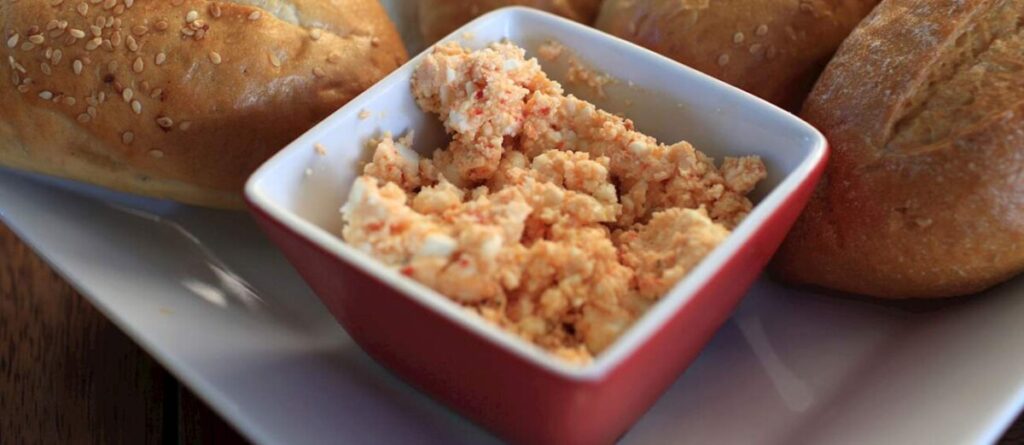
7. Sfela, this semi-hard cheese, is traditionally produced from sheep or goat milk or a mixture of the two. The milk used to make this cheese comes from breeds reared traditionally in the Messinia and Lakonia prefectures, where this cheese has been produced for more than 100 years.
To make Sfela, the curd has to be divided into pieces and reheated. Afterwards, the pieces are drained using cheesecloth, and they are lightly pressed and cut into small strips ('sfelas') and salted. The strips are stored in tin cans full of brine for at least three months to mature.
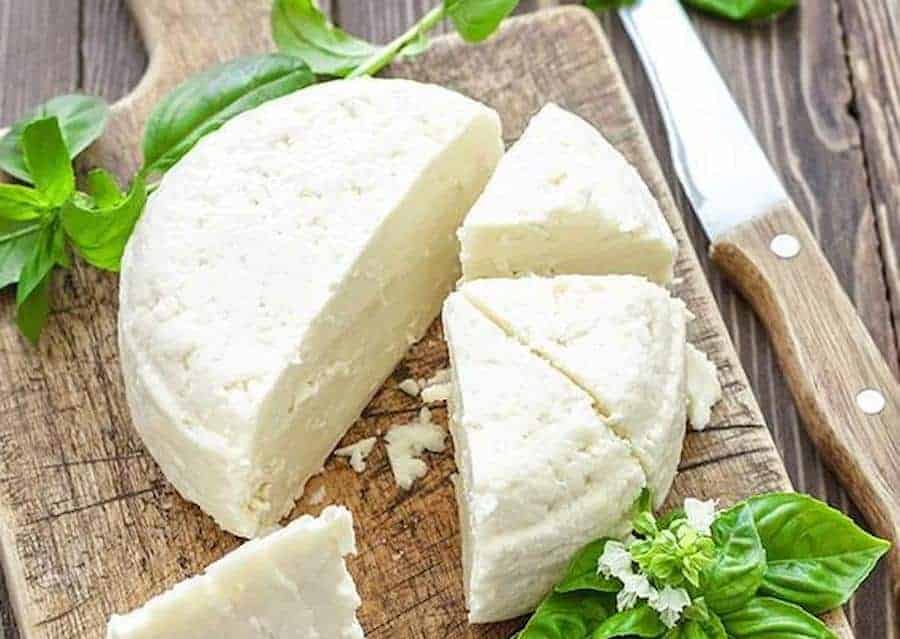
8. Formaella Arachovas Parnassou This semi-hard cheese has been produced from goat or sheep milk, or a blend of the two, in the town of Arachova below Mount Parnassus in central Greece for at least a century. The milk is taken from breeds that have adapted to the mountainous region, and their diet is based on local herbs and plants.
The cheese is curdled, and the curd is divided and put into special moulds or baskets, where it is salted and dried. The cheeses have a compact structure, a characteristic cylindrical shape, a pale yellow colour, and a striped appearance resulting from the reed mats on which they are dry. Formaella Arachovas Parnassou is a cheese with a very pleasant taste and aroma, and it is usually eaten plain or either fried or grilled as an ingredient in typical regional dishes.
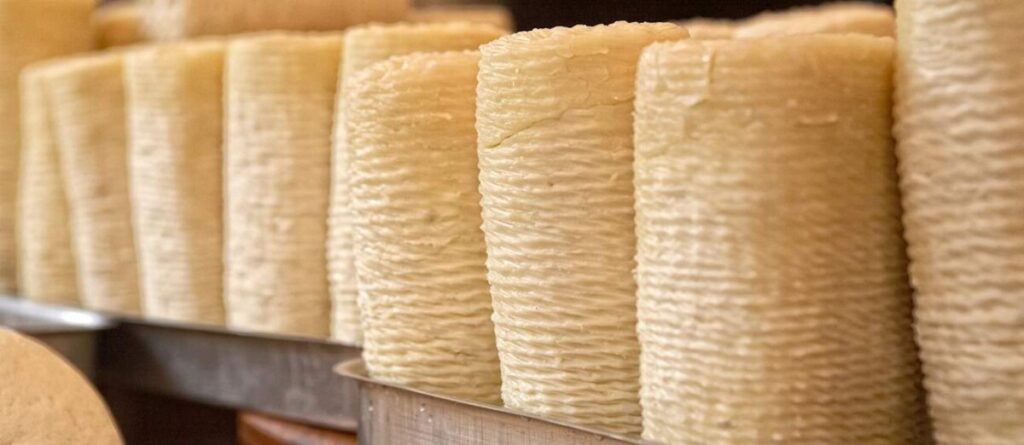
9. Katiki Domokou This cottage cheese is made with goat milk or a mixture of goat and sheep milk from breeds traditionally raised in the village of Domokos in the Othrys mountain range in central Greece. It is made following a traditional recipe without the use of rennet.
Once the cheese is drained, it is salted, and the product is ready to be packaged and sold. Since it is so rich in flavour but low in salt and fat content, it is an excellent choice for a low-fat diet. It has a mild aroma and a hint of sourness that combines well with many other ingredients.
10. Xynomyzithra Kritis This soft table cheese is made from whey processing Graviera or Kefalotyri Kriti's cheeses and adds sheep or goat milk or a mixture of the two. Its name combines two words – mizithra and xyno – meaning 'acidic whey cheese'. It is produced on the beautiful island of Crete in the Chania, Rethymno, Heraklion, and Lasithi prefectures, where it has been produced since the 17th century.
Today, Xynomyzithra Kritis is one of the most popular cheeses made on Crete. This lovely, white, rindless cheese has a distinctive sweet and sour taste, and its texture can vary from creamy to granular. Xynomyzithra Kritis can be used in various recipes, as it becomes milder and softer when cooked.
